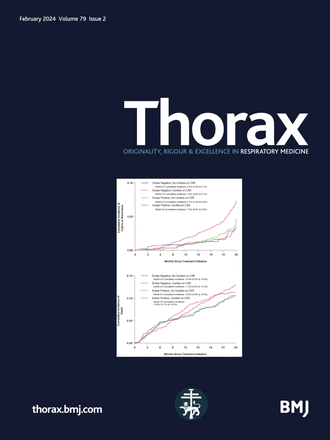Current and future applications of artificial intelligence in lung cancer and mesothelioma
IF 7.7
1区 医学
Q1 RESPIRATORY SYSTEM
引用次数: 0
Abstract
Background Considerable challenges exist in managing lung cancer and mesothelioma, including diagnostic complexity, treatment stratification, early detection and imaging quantification. Variable incidence in mesothelioma also makes equitable provision of high-quality care difficult. In this context, artificial intelligence (AI) offers a range of assistive/automated functions that can potentially enhance clinical decision-making, while reducing inequality and pathway delay. Aims In this state-of-the-art narrative review, we synthesise evidence on this topic, focusing particularly on tools that ingest routine pathology and radiology images. We summarise the strengths and weaknesses of AI applied to common multidisciplinary team (MDT) functions, including histological diagnosis, therapeutic response prediction, radiological detection and quantification, and survival estimation. We also review emerging methods capable of generating novel biological insights and current barriers to implementation, including access to high-quality training data and suitable regulatory and technical infrastructure. Narrative Neural networks trained on pathology images have proven utility in histological classification, prognostication, response prediction and survival. Self-supervised models can also generate new insights into biological features responsible for adverse outcomes. Radiology applications include lung nodule tools, which offer critical pathway support for imminent lung cancer screening and urgent referrals. Tumour segmentation AI offers particular advantages in mesothelioma, where response assessment and volumetric staging are difficult using human readers due to tumour size and morphological complexity. AI is also critical for radiogenomics, permitting effective integration of molecular and radiomic features for discovery of non-invasive markers for molecular subtyping and enhanced stratification. Conclusions AI solutions offer considerable potential benefits across the MDT, particularly in repetitive or time-consuming tasks based on pathology and radiology images. Effective leveraging of this technology is critical for lung cancer screening and efficient delivery of increasingly complex diagnostic and predictive MDT functions. Future AI research should involve transparent and interpretable outputs that assist in explaining the basis of AI-supported decision making.人工智能在肺癌和间皮瘤中的应用现状和未来
背景肺癌和间皮瘤的治疗存在相当大的挑战,包括诊断复杂性、治疗分层、早期发现和影像学量化。间皮瘤发病率的变化也使公平提供高质量护理变得困难。在这种情况下,人工智能(AI)提供了一系列辅助/自动化功能,可以潜在地增强临床决策,同时减少不平等和路径延迟。在这篇最新的叙述性综述中,我们综合了关于这一主题的证据,特别关注摄取常规病理和放射图像的工具。我们总结了人工智能应用于常见多学科团队(MDT)功能的优点和缺点,包括组织学诊断,治疗反应预测,放射检测和量化以及生存估计。我们还回顾了能够产生新的生物学见解的新兴方法和当前实施的障碍,包括获得高质量的培训数据和合适的监管和技术基础设施。在病理图像上训练的叙述性神经网络在组织学分类、预测、反应预测和生存方面已经被证明是实用的。自我监督模型还可以对导致不良后果的生物学特征产生新的见解。放射学应用包括肺结节工具,它为迫在眉睫的肺癌筛查和紧急转诊提供关键的通路支持。肿瘤分割人工智能在间皮瘤中具有特别的优势,由于肿瘤的大小和形态的复杂性,在间皮瘤中使用人类阅读器很难进行反应评估和体积分期。人工智能对放射基因组学也至关重要,它允许有效整合分子和放射学特征,以发现用于分子分型和增强分层的非侵入性标记。人工智能解决方案在MDT中提供了相当大的潜在优势,特别是在基于病理和放射图像的重复或耗时的任务中。有效利用这项技术对于肺癌筛查和高效提供日益复杂的诊断和预测MDT功能至关重要。未来的人工智能研究应该包括透明和可解释的输出,以帮助解释人工智能支持决策的基础。
本文章由计算机程序翻译,如有差异,请以英文原文为准。
求助全文
约1分钟内获得全文
求助全文
来源期刊

Thorax
医学-呼吸系统
CiteScore
16.10
自引率
2.00%
发文量
197
审稿时长
1 months
期刊介绍:
Thorax stands as one of the premier respiratory medicine journals globally, featuring clinical and experimental research articles spanning respiratory medicine, pediatrics, immunology, pharmacology, pathology, and surgery. The journal's mission is to publish noteworthy advancements in scientific understanding that are poised to influence clinical practice significantly. This encompasses articles delving into basic and translational mechanisms applicable to clinical material, covering areas such as cell and molecular biology, genetics, epidemiology, and immunology.
 求助内容:
求助内容: 应助结果提醒方式:
应助结果提醒方式:


